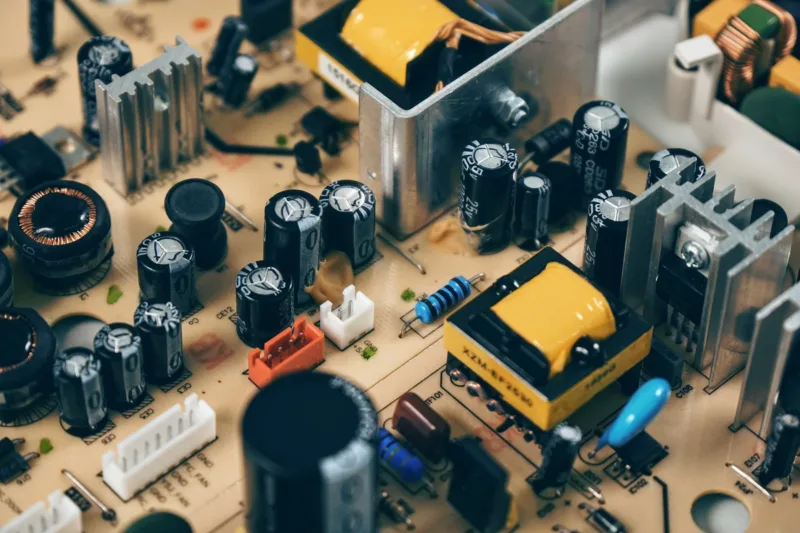Why Is Your AC Contactor Not Pulling In

AC contactor problems are a common occurrence. But the headache they cause is major. When the contactor malfunctions, the AC does not work as it should. In summers, facing such a problem is both irritating and frustrating. If you want your AC to be in top working order, you should start getting its periodic maintenance done. Most issues can be caught during maintenance itself and do not evolve into something bigger. However, there may be exceptions. You have all possible troubleshooting and just realized that your AC contactor is not pulling in. The problem is identified, but why did it happen? Have you ever wondered if it could have been prevented?
Work Of Contactor In Air Conditioner
The contactor on the air conditioning unit is a switch that permits or stops power supply to the unit. It is a relay switch which directs electricity to the compressor of the air conditioner. When power is not needed, the contactor pulls the electrical contacts apart. It closes the contacts when something needs to be powered.
AC Contactor wont Pulling In – What Does It Mean?
Pulling in refers to the contactor closing the electrical contacts to power the air conditioner’s compressor . When the contactor does not “pull-in”, it means that the connections do not close to power the compressor. As a result, the AC works, but in the absence of a working compressor, it does not cool the home.
Why Is Your HVAC Contactor Not Pulling In?
AC contactor not pulling in is not a major issue. It can be taken care of without much botheration. Surprisingly, it is something that can be avoided through periodic maintenance. Usually, the contactor malfunctions due to corroded contacts, coil failure, and contactor burnout.
1. Corroded Contacts – The contact points in an AC contactor are susceptible to corrosion because of moisture present in the air. Also, if not cleaned regularly they tend to get covered with dust and other particle matter which gets sucked in with air. This makes the points of contact dirty due to which they do not work as they should leading to contactor failure.
Solution – The answer to this problem is “Contact Cleaner”. A little dab of contact cleaner will get rid of all that which is accumulated on the contact points. A very small amount of cleaner is required due to the small size of the contacts. Once cleaned, the contactor will start pulling in as needed.
2. Coil Failure – In addition to the contact points, a contactor also has coils. Sometimes these coils fail altogether. At such times, the contactor develops a fault, and it may reflect in the form of failure to pull in.
Solution – Again, the solution is not complicated. You can solve the problem by simply replacing the old contactor with a new one. Although it is possible to just replace the said coils, it is not a preferred method. This is because not only reaching the coils is hard, but so is finding the right size to replace them. Moreover, you can buy a new contactor relatively cheap, and its cost of replacement would also be low. As against this, replacing the coil is an intricate task, and so, its cost of replacement will nullify any financial benefit you foresee.
3. Contactor Burnout – When the voltage influx to the contactor is more than its load carrying capacity, it gets fried. Usually, during high voltage, the circuit breaker should trip. When that does not happen, the contactor suffers complete burnout. Even loose cables can cause a short circuit which could lead to the same result.
Solution – The solution to this problem is also contactor replacement. Although the process is simple, because of the sensitive nature of its function, the job is best completed by a trained HVAC technician.
Important Thing To Remember
Your AC contactor will have its important details like the type, model, and voltage either printed on the body or have a sticker with the same information. When you buy a new contactor, it is necessary to match all these details and replace it with an exact replica. Brand differences are acceptable; what is not acceptable is the voltage difference. Replacing with an undersized contactor will put your AC unit under strain. As a result, the AC will either develop some significant problem or the contactor will keep getting fried.
Also, remember whenever you are working with electrical equipment, it is necessary to first switch off the power supply to it. This step is necessary to ensure that you do not get an electrical shock by mistake. To avoid such scenarios, we always recommend using the services of trained personnel. They know of all the possibilities and take due care to ensure their own safety as well as that of your equipment.
If You Can’t Find Exact Replacement Of Contactor
Our recommendation is to always replace a contactor, with the same make and model as that of the original one. Although it is possible that you don’t find an exact match. If that happens, be sure to buy one with terminals that are similar to the one you took out. Most importantly, make sure that the voltage rating is exactly the same as well as its load capacity or amperage.
Conclusion
Your AC contactor is a small switch like device which has a very important job to perform. During the course of annual maintenance, you should ask the HVAC technician to take a look at it as well. If need be, ask them to clean its contacts to increase its productive life. If your AC is not giving cool air, ask the technician to check the contactor for any faults. Though the issue may not be with the contactor, it is necessary to rule it out as a possibility. If you are still not convinced, you can always ask for a second opinion.
Frequently Asked Questions
The reasons your AC contactor is not pulling in are:
- Dirty or corroded contacts.
- Failure of contactor coils.
- The contactor is burnt.
Connection and mountings mistakes, selection of the wrong cable, voltage drops, current surge, age, and use-related wear and tear of the component are some of the common causes of contactor failure.
The term pulling-in refers to the contactor closing the electrical circuit (contacts) to power the AC compressor. When the contactor fails to “pull in,” it means the contactor’s connections are either not closing at all or not closing enough to power the compressor.
A new contactor may not pull in if its coil is damaged or burnt. Replacing the coil will take care of the situation. If the coil is fine, the other likely possibility is that the wiring in the control circuit is not proper, in which case, the problem will persist until the wiring is rectified.
Some probable reasons for the contactor with 24V not pulling in are:
- A malfunctioning thermostat or a thermostat that is not set on the cooling mode.
- There exists open or shorted thermostat wiring which goes to the thermostat from the contactor or transformer.
- Weak, worn-out, or shorted transformer, that is unable to handle the coil load.












